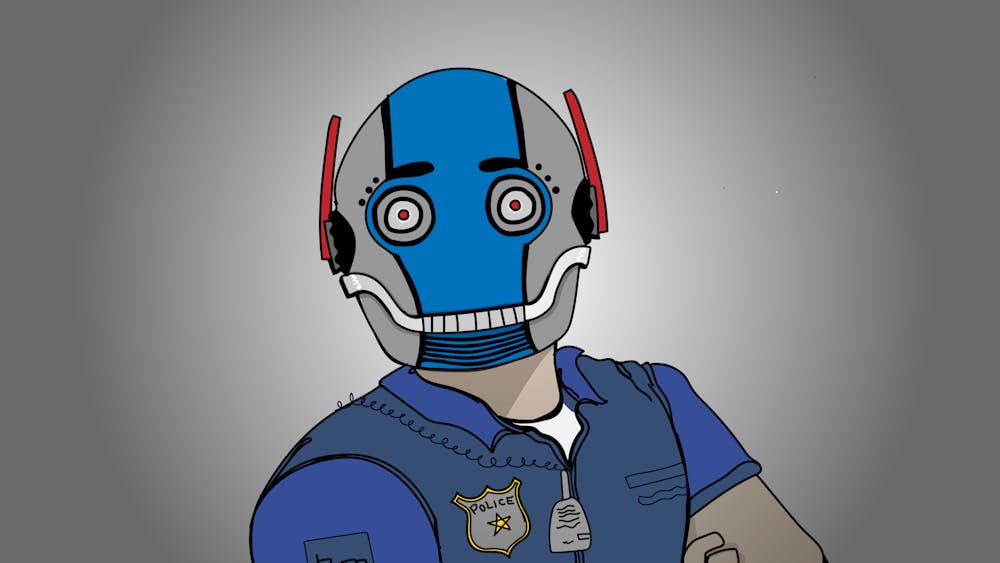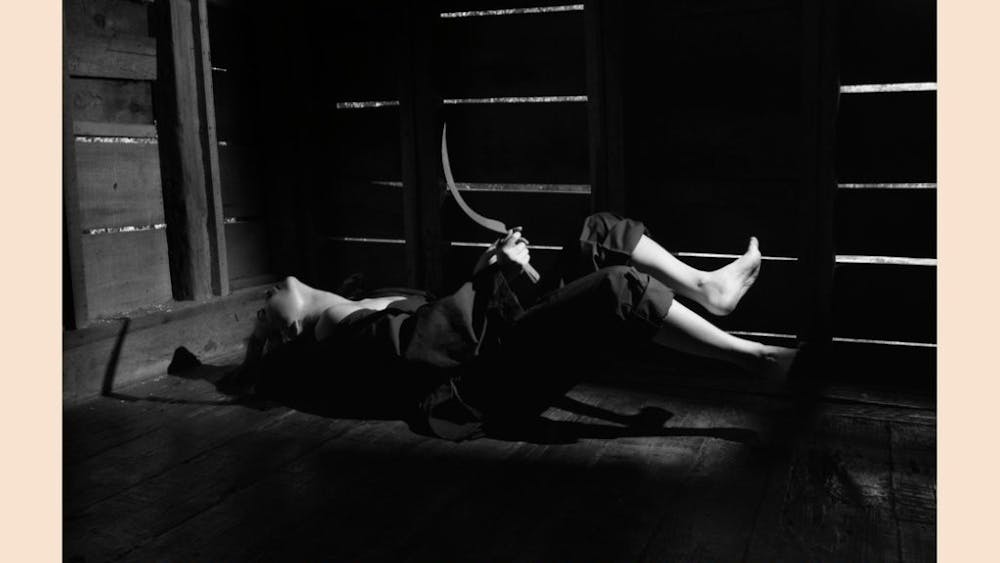In its Feb. 20 issue, the IDS published a picture of an IU women's tennis player in the process of serving to her University of Iowa opponent.\nThat photo, which appeared on Page 11, was digitally altered.\nFormer IDS photo editor Matt Ooley digitally inserted a tennis ball into the photo, making it look like the tennis player was about to hit the ball when, in fact, the ball was much higher up in the air and out of the frame of the photograph.\nOoley has since resigned his position as photo editor. The IDS management printed a short correction, explanation and apology on Page 2 of the Feb. 26 issue of the IDS.\nSo what's the big deal? It's just a tennis ball, right? Granted, a rule of thumb for sports photojournalists is to get the ball in the frame -- for sports that involve the use of balls, anyway. The inclusion of the ball within the frame provides a sports photograph with a sense of self-contained unity. We, as readers, are able to see the object at which the players' or athletes' actions are directed. \nBut another rule of thumb for newspapers is to never alter or misrepresent photos in any way. This principle has become especially important now that many newspapers and newsmagazines are using digital photography instead of or in addition to traditional photojournalism methods. \nAltering photos has always been possible. Digital cameras and photo editing software have just made such alterations easier and more tempting. \nDigital photography is "the Pandora's Box of the computer age," said John Long, ethics co-chair of the National Press Photographers Association, in a 1999 speech. "All images are called into question because the computer has proved that images are malleable, changeable, fluid. Once the shutter has been tripped and the moment has been captured on film, in the context of news, we no longer have the right to change the content of the photo in any way. Any change to a news photo -- any violation of that moment -- is a lie. Big or small, any lie damages your credibility."\nOoley realized the seriousness of his mistake and made the right decision in stepping down. Such an action sends a strong message to IDS readers that the newspaper and its staff are serious about being accountable for their ethical lapses, no matter how innocuous such errors might seem.\nBut the IDS management could have handled the situation better. The correction it ran in regard to the photo was abrupt and insufficient considering the seriousness of the error. It read: "The women's tennis photo that ran in the Feb. 20 IDS was digitally altered during the editing process. This came to the IDS management staff's attention after the photo appeared in the paper. The photo editor on duty that night, Matt Ooley, has stepped down from his position. The IDS apologizes for this indiscretion."\nDigitally altering a photograph might have been a simple "indiscretion" on Ooley's part. Everyone makes and learns from mistakes; he took responsibility for his. But the IDS management's treatment of the error left much to be desired. The correction box should be used for correcting errors of fact, including but not limited to misspelled names and misidentified persons; inaccurate or incomplete figures; and other information in need of clarification or explanation.\nSerious ethical errors and lapses in judgment should be treated differently. The IDS management should not be afraid to fully and honestly own up to its faults. Doing so leads to greater responsibility and accountability. Failing to do so does an enormous disservice to readers. \nA newspaper does not exist in a vacuum. Its readers are continually judging it and evaluating its relevance to their lives. A newspaper that repeatedly ignores or downplays its own mistakes is bound to lose credibility with its readers. \nIf this ombudsman's column has served the purpose of explaining the situation, so be it. Perhaps such situations are best repaired by an apology from the ombudsman on behalf of the newspaper's management. Journalism ethics is a primary, recurring topic of this column, after all. \nBut the IDS as a whole could have handled this situation in worse ways. It could have easily done nothing about it. Ooley could have kept his job and no one would have been the wiser. Journalism ethics are not static. As the technology of journalism changes, so do the rules and guidelines under which journalists operate. \nBut certain ethical principles do and should always remain. One of these is telling the truth and representing the world of human affairs with an unflinching honesty and dedication to accuracy. Digital photography certainly introduces a new way of doing photojournalism, but it should not, under any circumstances, subvert journalists' obligation to the truth.
Ethical lapses hurt everyone
Get stories like this in your inbox
Subscribe





